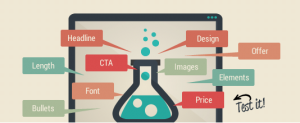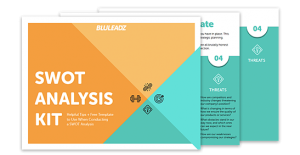Most successful business owners can, with confidence, answer the question “How well is my business doing?” Better yet, they can back up their answer with sufficient data. After all, only when you can answer this question with data-backed clarity will you know where your online store stands today and what to do tomorrow to scale to even greater success.
In other words, today’s data-driven decision making is beaconed more by hard facts than gut reactions –– and that’s a good thing. In fact, maintaining such practices has long been known to produce high ROI for the likes of Amazon, Target and eBay, to name a few.
What are they doing differently than you? They know what to measure.
If you want to start scaling like the big box retailers, then you need to have a solid understanding of the metrics involved in data-driven decision making. Below, find the top 11 ecommerce metrics you need to know to build a successful online store.
Cost of Acquiring Customer (CAC)
Everyone understands that before you start seeing orders coming in, you need to drive traffic to your store and then convert those visitors — and that costs you money. This metric reveals how much money you spend throughout the acquisition funnel, from promoting a post on Facebook, to having a visitor come to your site because of said promotion, all the way through to their finding a product they like and finally checking out.
The cost of customer acquisition is the amount of money you have to spend to get one customer. The lower the cost of acquisition, the better: i.e., you always want your cost of acquisition to go down. As a quick example, your CAC is $ 40 if you need to spend $ 200 to get five visitors to buy on your store.
You may employ different techniques to bring in those visitors — SEO, paid ad campaigns, high-quality content, social media — but all of them cost you either in terms of money or time.
There are a lot of factors that affect your cost of customer acquisition, but it is important to get an accurate number here. As a best practice, you should always try to find marketing outlets that lower your CAC valuation.
Conversion Rate (CR)
Once your store gets traffic, you need to see how many visitors are buying. Conversion rate reveals just that.
Conversion rate is defined as the percentage of visitors who end up buying from your store. The higher the conversion rate, the better. When it comes to conversion rate, you always want it to be going up. As a quick example, your conversion rate is 2% if 2 out of 100 visitors buy from your store. According to this recent Marketing Land article, one way to improve conversion rate is to add video to a majority of your product pages; retailers adding video reported conversion rates close to 9%.
There are hundreds of articles out there on how to improve conversion rates –– because it is just that important. There’s so much emphasis on conversion rate because it directly affects your business’s bottom line. Regardless of how much effort you spend on driving traffic to your store, if most visitors don’t end up buying, it’s all wasted. That said, it’s really important to make sure you know what your conversion rate is at all times and keep tabs on whether it’s improving and if you should stay the course or not.
Shopping Cart Abandonment
When your conversion rate is low, you need to understand how many visitors had an inclination to buy. To do this, you’ll want to examine your store’s cart abandonment.
This metric indicates the percentage of visitors who added products to their shopping cart but did not complete the checkout process. The lower your cart abandonment rate, the better. As a quick example, your shopping cart abandonment is 75% if 75 out of 100 visitors with a cart leave without buying.
Cart abandonment is the closest you come to earning real customers before they leave your site. Adding to the cart typically indicates an intent to purchase. The fact that they leave without buying means you lost potential customers. It gets especially bad if you paid a lot of money to get these visitors to your store. Making sure your cart abandonment is low is key to improving your conversion rate.
Average Order Value (AOV)
You should monitor how much money each order brings in to see how much revenue you can generate. That’s what AOV tells you.
This is the average size of an order on your store. The higher the average order value, the better. For example, your AOV is $ 35 per order if you made $ 140 from 4 orders.
By monitoring AOV, you can figure out how much revenue you can generate from your current traffic and conversion rate. Being able to predict revenue is a big deal for any business. If most of your orders are really small, that means you have to get a lot more people to buy in order to achieve your target. It’s important to have at least a few high value orders so that your overall average is on the higher side.
Churn
If your LTV is low, it could be that many of your customers buy once and never return. This is measured by what is referred to as “churn.”
Churn is the percentage of your customers who do not come back to your site. The lower the churn, the better. For example, a churn rate of 80% means 80 out of 100 customers do not come back to buy from your store.
As we have seen, to ensure a high profit, it’s important to influence your customers to keep coming back to purchase. That means you want your churn to be low so that once you acquire a customer, they continue to come back and purchase again and again. Lower churn means higher LTV and a healthier business overall.
Lifetime Value (LTV)
If there was only one number you could focus on to grow your ecommerce store, it’s LTV. This is the projected revenue that a customer will generate during their lifetime.
There are multiple ways to get this number, but the simplest is to take your average customer value over a set time period (average customer expenditures x average customer visits) and times it by your LTV cadence, i.e. if you want a weekly, monthly or yearly LTV. For this example, let’s say you want a weekly cadence.
If your average customer value is 100 per week, that brings you to 5,200. Then, you multiply that by your average customer lifespan. Here, you can use actual numbers or project, using the estimations to determine how long customer lifespan needs to be to produce an ideal LTV.
For instance, if your customer lifetime value is 2 years, your LTV is $ 10,400. This means that you can expect to make $ 10,400 in revenue from your acquired customer in a two year period.
While conversion rate tells you how much money you are making, LTV tells you how much profit you are making. From the example, if you spend $ 40 to acquire a customer, you definitely want the customer to spend at least that much in your store. Anything after means you’ve added to your profit. You can try to improve your customer LTV by influencing him or her to keep buying from your store, because the bigger the LTV, the bigger the profits.
Additional Metrics
Beyond these metrics, there are additional analytics many of the big box retailers pay particularly close attention to. These include:
- Cost Per Impressions (CPM) – (Ad Spend/(Impressions/1000): This is most commonly used to measure the rate you would pay for a online banner ad campaign or other online advertising campaign. An Impression refers to the times the ad is served on a webpage (how many times the ad is seen).
- Cost Per Click (CPC) – (Ad Spend / Clicks): This is most commonly used to measure the rate you would pay for a search engine ad campaign. CPC can also be referred to as PPC (Pay Per Click).
- Cost per Acquisition (CPA) – (Ad Spend / Orders): This is most commonly used to measure the rate you would pay for a new order or customer. CPA is often used when measuring the rate you would pay an affiliate for referring an order to you.
- Revenue Per Click (RPC) – (Revenue / Clicks): This is the amount of revenue you can expect for each click you receive to your site.
- Cost of Sale (COS) % – (Ad Spend / Revenue): This is the portion of your revenue that goes to your ad spend and is measured in percent.
- Customer Lifetime Value (LTV): This is the projected revenue that a customer will generate during their lifetime. For a full explanation of how to calculate LTV for your online store, check out this infographic.
Once you start measuring your ecommerce store performance and using data to drive your business decisions and strategies, you’ll be well on the way to enterprise-level success. No big box retailer takes action without measuring the impact and neither should you. So, monitor your metrics, pivot when and where necessary and make the most of your both your time and money in order to build a successful brand.
(339)
Report Post





